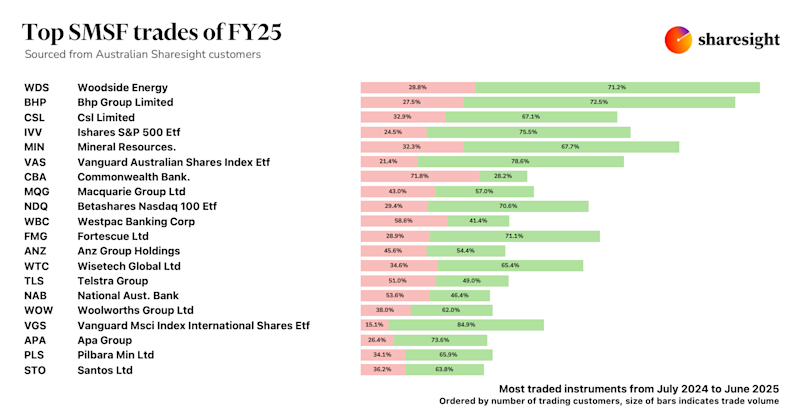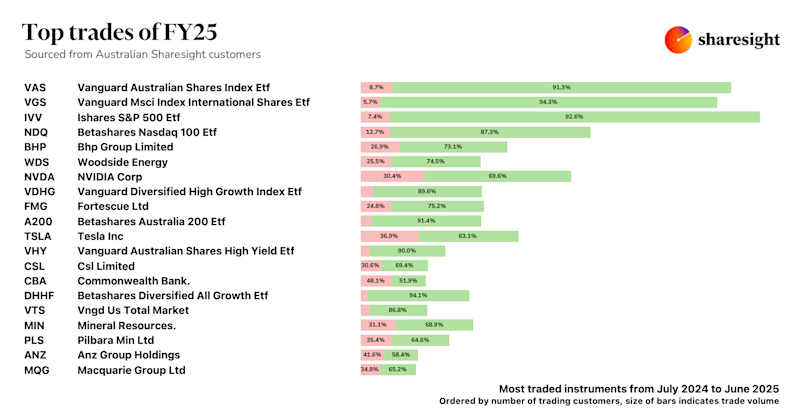Is it time to consider a defensive investment strategy?
Disclaimer: The below article is for informational purposes only and does not constitute a product recommendation, or taxation or financial advice and should not be relied upon as such. Please check with your adviser or accountant to obtain the correct advice for your situation.
Buying growth assets and holding them for the long term might generally be sound advice, but there are times in every investor’s life when they seriously consider switching to a defensive investment strategy – especially if they’re at or near retirement age.
There’s no shortage of concerning news around at the moment, so some investors might wonder if now is, indeed, a good time to go on the defensive.
Historically, investors have done well when they’ve accumulated a diversified portfolio of equities and then hung on for the long term – because despite regular bear markets, history shows that the world’s major stock markets have experienced far more ups than downs. In other words, they’ve averaged year-on-year growth.
But long-term averages are cold comfort if you’ve left the workforce and your portfolio of growth assets suddenly falls 25%. Your wealth may never recover. With the benefit of hindsight, you might wish that you’d switched from a growth strategy (trying to build your wealth) to a defensive strategy (trying to protect your wealth).
Even the world’s greatest growth investor, Warren Buffett, believes there are times when it’s better to be cautious. To quote his famous two rules of investing: "Rule number one: never lose money. Rule number two: never forget rule number one."

The case for the defence
Some investors are permanently bullish. They argue that history is on their side; that the go-for-growth strategy always prevails over the long term. Fair enough.
But if you’re a bearish investor, you don’t have to look too hard right now to find evidence to support your case:
● Trade tensions – the trade war between the US and China is not only rumbling on, it’s actually escalating, placing downwards pressure on economic growth in both countries. If the world’s two biggest economies sneeze, the global economy is likely to catch a cold.
● Inverted yield curve – yields on 10-year US government bonds have recently fallen below yields for two-year Treasuries. That is a danger sign, because in past recessions, yields for long-term bonds have also dipped below yields for short-term bonds. (That said, while recent recessions have always featured ‘inverted’ yield curves, inverted yield curves haven’t always prefigured recessions.)
● Brexit – a no-deal Brexit looks increasingly likely, which could devastate the UK economy (the sixth-largest in the world) and also damage the EU economy (the world’s third-largest).
What is a defensive investment strategy?
So it makes sense why some investors might be considering switching from a growth to a defensive investment strategy.
But what, exactly, do those terms mean?
A growth investor might have, say, 70% of their funds in growth assets and 30% in defensive assets, while a defensive investor might choose a 30/70 split (click here for example weightings for different investment strategies).
Growth assets include stocks, property, REITs and alternative investments – assets that can quickly rise and fall in value. Defensive assets, by contrast, tend to be income producing investments with lower volatility such as bonds, term deposits, gold and ‘defensive stocks’ (such as utilities).
A defensive investment strategy is more about minimising (or avoiding) losses than maximising gains. That’s why it may suit investors who are at or near retirement age, or younger investors who might be planning to liquidate their portfolio in the near future so they can buy a property, start a business or fund a wedding.
Benjamin Graham’s four rules for defensive stock selection
Before there was Buffett, there was Benjamin.
Benjamin Graham, also known as the ‘father of value investing’, was a legendary professor and investor who taught and later employed the young Buffett. Graham was also an author: he wrote The Intelligent Investor, which Buffett calls "the best book about investing ever written".
In The Intelligent Investor, Graham advises defensive investors to "purchase only high-grade bonds plus a diversified list of leading common stocks". This should be done through dollar-cost averaging, he says.
Graham also offers four rules to follow when choosing defensive stocks:
● Build a portfolio of 10-30 diversified stocks
● Choose companies that are "large, prominent, and conservatively financed"
● Choose companies with "a long record of continuous dividend payments"
● Pay no more than 25 times average earnings over the past seven years, and no more than 20 times average earnings over the past 12 months
Stay on top of your investment strategy with Sharesight
Sharesight has made it easy for investors to heed Graham’s advice about building a defensive portfolio.

We’ve created a clever tool, called the Diversity Report, to help you track your diversification. Just click on the drop-down menu and you’ll be able to see easy-to-read pie charts showing how you’re diversified across different:
- Markets
- Sectors
- Industries
- Countries
- Investment types
There’s also a customisation option that allows you to see how diversified you are based on your own specifications. With custom tags you can specify whether a particular holding is ‘defensive’ or ‘growth’ according to your own investment strategy.
Then when you run the Diversity Report it will reveal if, say, you’re overweight in growth stocks or underweight in defensive assets vs your target allocation.
The Diversity Report is available on Sharesight Expert and Pro plans - upgrade today to access this feature.
FURTHER READING

Top SMSF trades by Australian Sharesight users in FY24/25
Welcome to our annual Australian financial year trading snapshot for SMSFs, where we dive into this year’s top trades by Sharesight users.

Top trades by Australian Sharesight users in FY24/25
Welcome to the FY24/25 edition of our Australian trading snapshot, where we dive into this financial year’s top trades by Sharesight users.

Morningstar analyses Australian investors' top trades of FY25
In this article, Morningstar reviews the key events of FY25 and shares three stocks their analysts are watching closely.